Tambourine, or Luneville, embroidery – is an ancient technique used to create luxurious compositions on a woven base. To learn the craft, there are instructions and detailed master classes for beginners.
A special device is used for the work - a Lunéville hook, as well as various decorative materials - sequins, beads, contrasting threads. Before starting work, beginners need to familiarize themselves with the features of the technique, choose the right materials and tools for embroidery in the broderie de Lunéville style.
What is handicraft
Lunéville embroidery for beginners and experienced craftswomen is a special technique of handicraft. The work is performed using a special hook and decorative materials - metallized or regular threads, sequins, beads and other decor.
The main feature of the technique is that beads and sequins are not sewn on separately during the process. Only the thread on which they are previously strung is sewn on.
Both hands are used simultaneously in the work, for convenience the woven base is first stretched on a hoop or tapestry frame. The embroidery is done using the spool method, the thread is cut after the embroidery is completed, which allows saving expensive decor.
The technique differs from the usual methods, as the work is done from the back side of the canvas. The front side can be seen during the work if the woven base on which the embroidery is done is transparent. The main principle of the technique is tambour embroidery, in which the main chain stitch looks like a textured braid.
For convenience, the device with a hook needle is equipped with a pointer that allows you to:
- optimally determine the capture;
- exercise control over thread retention;
- determine the location of the tongue slot.
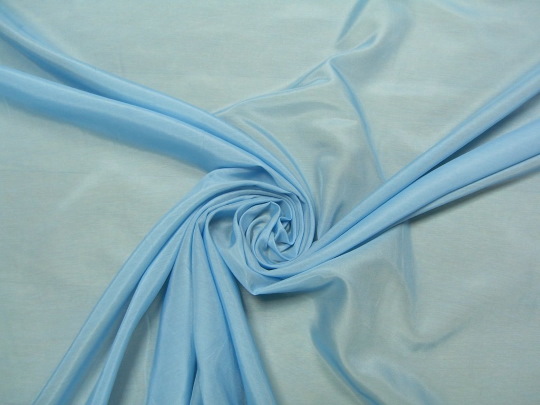
For the base, you can choose a variety of fabrics, smooth or textured, synthetic or natural. The most delicate and refined will be a lace picture on a cambric or silk base. For such works, a simple tambour stitch technique is used, and for denser and more textured fabrics, such as velvet, it is recommended to use a beaded pattern.
The embroidery technology using the Luneville hook allows you to create a variety of handicrafts, with its help it is easy to fill large areas of fabric. It is often used to decorate clothes, accessories, decorative items, all kinds of textiles, carpets, towels, exclusive bed linen.
The technique is often used to create collections of evening and wedding dresses, haute couture accessories, as the method gives the craftswoman wide opportunities and high speed of work in comparison with other methods.
What materials are used in the work?
Lunéville embroidery (photo, diagrams below) is a simple technique, but for beginners before practical lessons it is necessary to learn the basics of the method and learn how to choose the right materials.
To work you will need to prepare:
- Luneville hook.
- Hoop or tapestry frame.
- Stencils for the pattern.
- Textile base of any density.
- Decorative materials (contrasting or metallic threads, sequins, beads, glass beads, rhinestones).
The selection of materials is the most important stage, since the quality and aesthetics of the final work will depend on it.
Threads
Luneville embroidery uses thin and strong threads, especially if beads or sequins are used in the work.
The rating of the most popular threads is presented below:
| Name of the brand of threads | Features of use |
| Fil Au Chinois ("Chinese") | Waxed, durable, with a glossy sheen. The threads are made specifically for hand embroidery, and do not twist into a knot during work. The thickness is selected depending on the characteristics of the pattern and the fabric on which the work is performed. |
| Madeira | These threads can be cotton or silk. Cotton threads are more difficult to work with, as they are twisted in a special way and can be twisted into a knot. Silk ones do not twist, slide smoothly, are easy to work with, but, unlike cotton ones, it is more difficult to create a textured pattern with them. |
| Gutermann | It is recommended to use #110 for Luneville embroidery. The threads are thick and strong enough and twist slightly during the process. |
| Adele | The manufacturer offers a high-quality lurex series in convenient spools for Luneville embroidery.
Metallic threads are available in a variety of shades, from classic gold and silver to bright fuchsia and emerald, as well as chameleon threads that change color. |
The most important criterion by which a thread is selected is its strength quality and ability to hold knots. According to needlewomen, viscose threads are the most convenient to work with, as they are stronger than cotton threads and tend to twist into knots less.
The peculiarity of the Luneville technique is the delicacy and sophistication of the patterns, the absence of bright contrasts. That is why it is recommended to select threads close to the tone of the base fabric or neutral delicate shades.
Hook
The Luneville hook is a special device consisting of 2 main parts:
- screw handle;
- crochet needle.
Thanks to the screw handle, the device is comfortable to hold in your hand while working. There is a special indicator on the handle that helps the needlewoman determine the optimal grip and position. The hook needle differs from the standard one by its characteristic head. The mini-design of the cylindrical shape has a slight sharpening, which distinguishes it from a regular crochet hook.
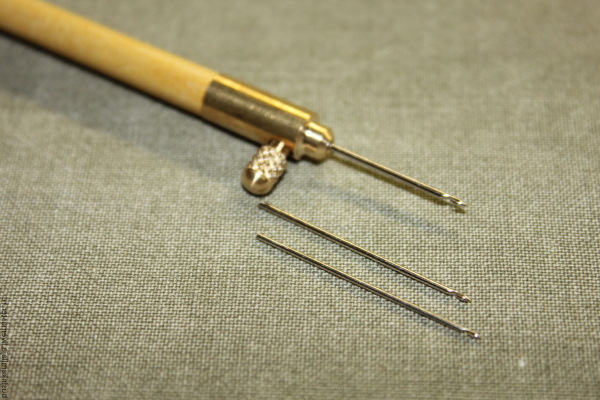
This device allows you to pierce the fabric faster and more accurately, catches and holds the thread. The slot on the head allows you to accurately determine from which side the thread should be fed. Hook needles can be of different sizes, they can be changed depending on the type of thread and the density of the fabric on which they are used.
Scissors
A distinctive feature of the Lunéville technique is the use of thread from a spool. It is not cut between stitches and pattern elements, securing it only at the end of the work. But in needlework, all sorts of situations happen and high-quality scissors should always be at hand. For embroidery, as a rule, a separate pair is used, which is stored in a box or container.
The most popular types of embroidery scissors are:
- Herons. They have an ergonomic shape and thin blades.
- Prym curved. Thanks to the special curved shape of the blades, these scissors are quite maneuverable and can be conveniently positioned parallel to the canvas.
- Vintage. Original models in the form of the Eiffel Tower, grapevine, are less maneuverable, but can diversify the collection of creative tools.
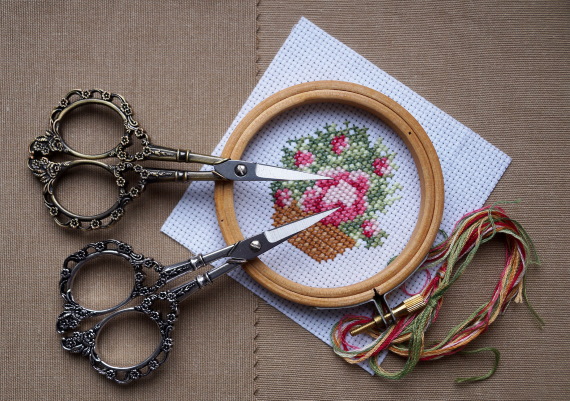
To work with metallized threads, you will need a separate pair of scissors, as they are most susceptible to scratches and chips during work. Regardless of the type chosen, all tools require careful maintenance and timely sharpening.
Selection of the basics
Lunéville embroidery for beginners requires special attention when choosing the fabric base for work.
For beginners in needlework, it is recommended to choose the following fabrics for their first products:
- crepe - inexpensive, translucent, which is used for sewing curtains;
- polyester organza, but it should be taken into account that the fabric glares when exposed to light;
- silk organza — the most convenient to work with, but expensive.
The most beautiful and exquisite works are made on the Italian mesh "Lux". This fabric has medium rigidity, does not stretch, is durable, with small cells.

In general, Luneville embroidery is quite diverse in terms of fabric selection; it is performed on:
- silks;
- chiffon;
- cambric fabrics;
- muslin;
- any type of wool;
- cotton fabrics;
- velvet.
On denser materials, a textured bead pattern with metallic threads, rhinestones and beads decor looks bright and luxurious.
Working technique
Lunéville embroidery for beginners is an ancient complex needlework technique that is worth mastering by starting to work with a simple thread, without beads or sequins.
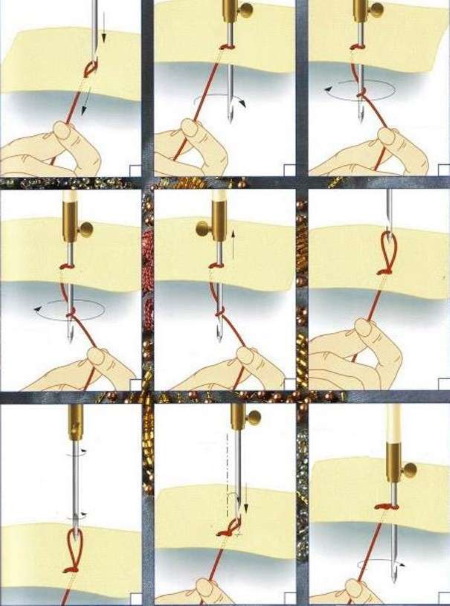
The algorithm of the technique is as follows:
- The woven base is fixed on a tapestry frame (hoop), both hands will be involved in the process.
- The work begins with inserting a hook with the optimal needle size into the fabric, piercing it. From the front side, pull the thread to the hook, tying it into a loop. Beginners can simply tie a knot on the free end of the thread.
- The loop is thrown over the hook barb, pulling it tightly towards itself. After the loop is pulled out, the hook is turned 180 degrees.
- Moving along the outline of the pattern, punctures are made with a needle, maintaining a small distance between the points. Each time, the thread is brought to the hook, hooked and pulled out to the wrong side.
- When several stitches have been made, a smooth chain stitch is formed on the woven base on the back side and a smooth line on the front side.
The main point of the technique: after each puncture and pulling of the thread, it is necessary to turn the hook 180 degrees. The embroidery process using a Luneville hook moves several times faster than with a regular needle.
Gradually, becoming more confident and having mastered the basics of the technique, you can complicate the work by adding beads, sequins, bugles and other decor to the weaving to create luxurious patterns. The beads are strung after the first stitch. Picking up the thread with each stitch, you need to separate the beads one by one so that on each embroidered stitch on the front side there is a sparkling bead.
How to get started correctly
Before you start embroidering, you need to prepare to start working.
Some tips for preparing for Luneville embroidery:
- The selected fabric is first stretched onto a hoop or tapestry frame. If thin or mesh fabric is used as a base for creating a pattern, it is recommended to sew the patch along the edges with a thicker fabric. This will help to achieve uniform tension.
- The pattern or design you like is transferred onto the fabric using a fabric marker or carbon paper. You should not transfer the drawing with a simple pencil or pen, you can damage the fabric. Beginners are advised to use ready-made stencils, and many experienced craftswomen use the old method of dusting to transfer the drawing.

- To transfer the drawing to the base using the dusting method, you need to take the tracing paper, apply it to the base, and prick it with a sharp thin needle so that visible micro-holes remain on the fabric and tracing paper. Then the tracing paper and fabric are combined, firmly secured with pins, and sprinkled with a special powder on top.
You can use a special composition bought in a craft shop, as well as improvised means - blueing, paste of chalk and kerosene. Having seeped through the holes, the powder forms the contours of the pattern on the base. After finishing the work, such powder does not leave marks when washing.
- An important point when preparing for embroidery is the selection of threads. They can be thin or rough and thick, with a glossy or matte effect, metallic or cotton. A pattern created with the addition of lurex thread looks elegant and elegant on fabric.
As decoration, beads and beads of various shapes and sizes, sequins, rhinestones and other elements can be strung on the thread during the embroidery process. Much depends on the style of embroidery, pattern and type of woven base. After the preparatory stage is completed, all materials are prepared, you can start needlework.
Laying out stitches
The main element of Lunéville embroidery is considered to be the tambour stitch.
It is performed using an applied contour pattern on linen, cotton, silk or wool fabric of any structure.
Algorithm for performing a chain stitch with a crochet hook and needle on a woven base:
- Before you start working, you need to secure the thread by tying a strong knot at its end.
- When making the 1st loop, the tool is brought in at an angle of 90 degrees, the main thread from the spool is fed from below.
- When working, you need to hold the thread with your right hand and feed the thread with your left. The thread is thrown onto the hook, slightly pulled with your fingers, turning the tool counterclockwise.
- The loop is securely fixed, and the hook and thread are pulled to the front side of the base. After completing the element, the tool is turned 180 degrees.
- Then the thread must be picked up, retreating a small distance from the previous puncture point. The fabric is punctured again, the thread is picked up and pulled out, turning the instrument over.
Using this algorithm, it is easy to embroider a whole chain of tambour stitches. After the work on creating a tambour stitch pattern is finished, the thread must be fixed.
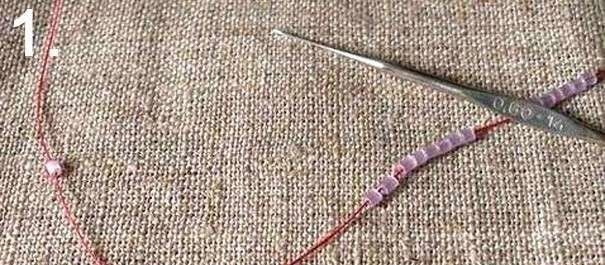
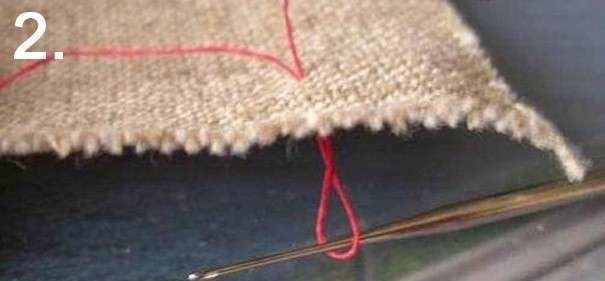
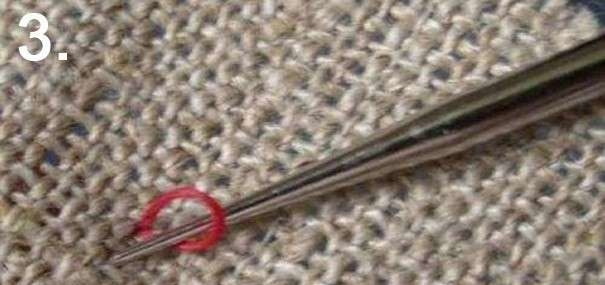
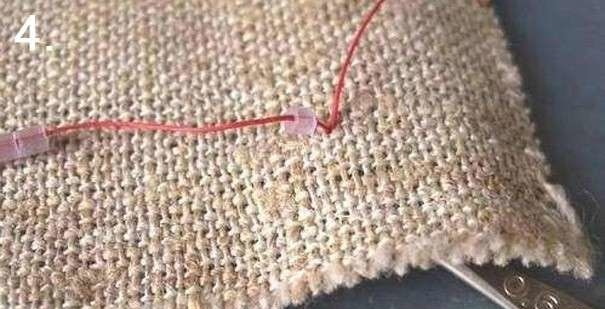
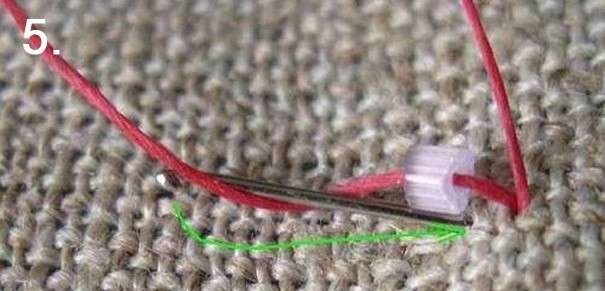
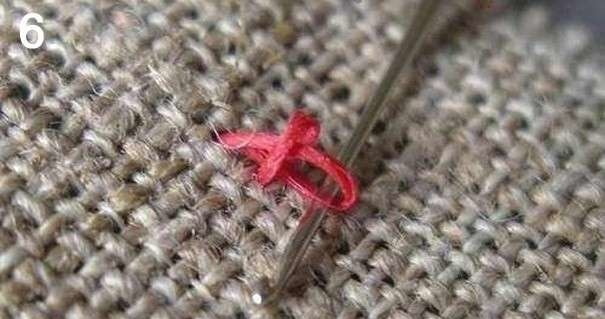

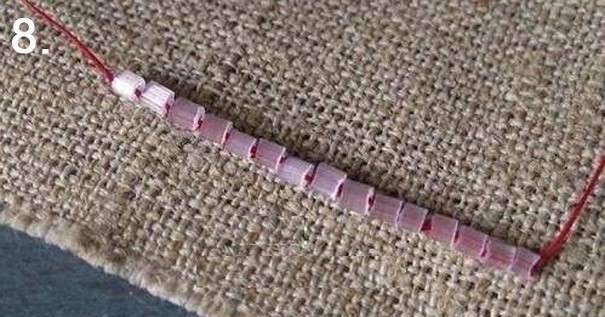
To do this, pull it to the wrong side, throw on a few more loops for extra strength, fix the knot, and carefully cut off the end of the thread. On thin and delicate fabrics, it is necessary to pierce the base very carefully, lowering the hook to the bottom.
With beads
Luneville embroidery for beginners and experienced needlewomen using beads, rhinestones, sequins is one of the ways to create luxurious exclusive patterns on various textile products. This type of needlework has an advantage - beads are sewn on in a matter of seconds without unnecessary manipulations.
Instructions for Luneville embroidery using decor:
- To prevent the thread from getting in, you can secure it by stringing a few beads. After that, you can start working from the back side.
- During the embroidery process, the thread is hooked and then returned to its original position. The fabric is then turned over to determine the location of the next stitch.
- When the fabric is turned over, the bead moves onto the thread. The hook is inserted after the bead, the bead is wrapped with thread, after which the tool returns to its original position.


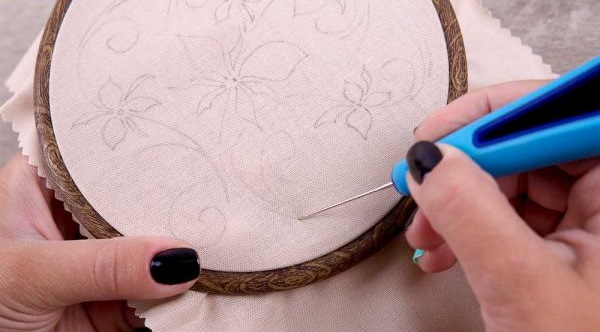
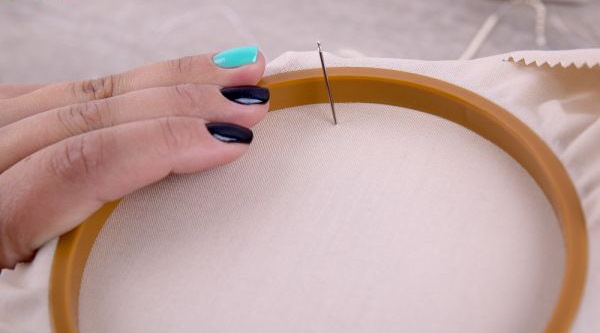
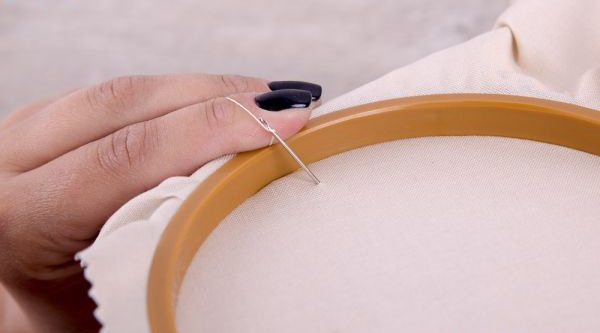

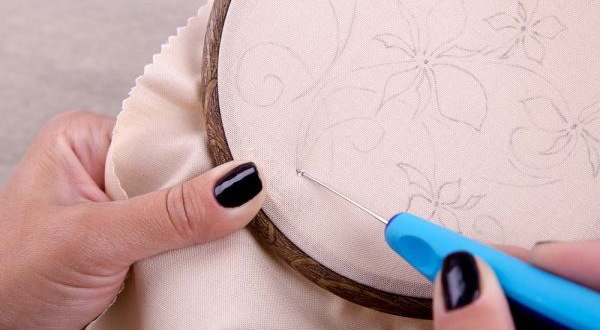
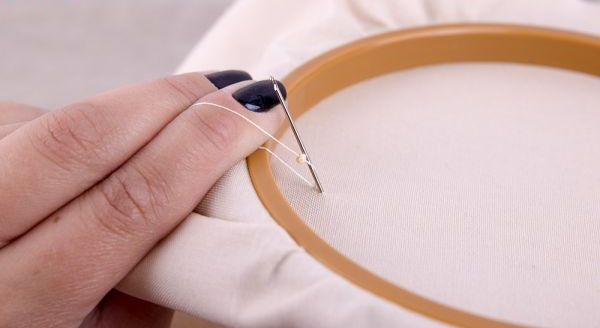

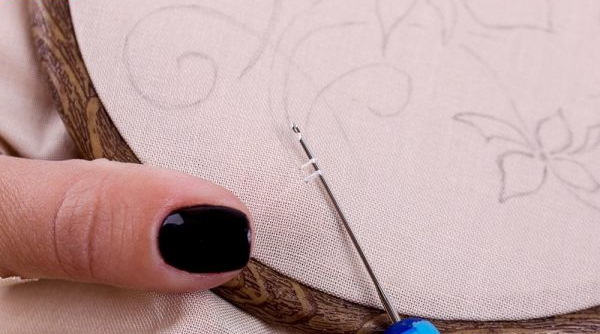
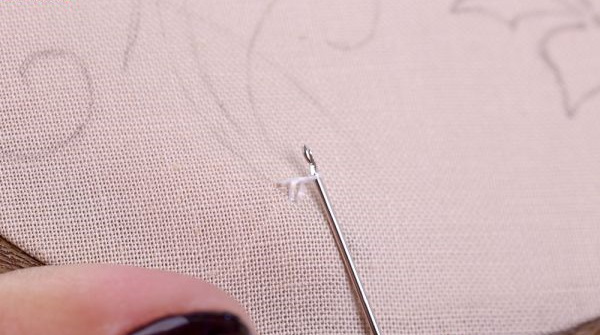

- On the back side, 2 additional loops are formed. A chain is formed from them, for this, the first loop is threaded into the second loop by turning the hook in a circle.
- Similar manipulations must be repeated to the end of the row, gradually stringing beads and threading loops. As a result, a pattern of a chain of loops remains on the back side, and a beaded pattern on the front side.
When doing bead embroidery, it is recommended to choose strong and thin threads. Stitches should be made at a distance equal to the size of the bead. When working on a delicate fabric base, it is important to prevent the formation of holes, snags or tears.
To avoid ruining your work, you should follow these recommendations:
- manipulate the hook carefully, inserting and removing it with each stitch, without pulling it too hard from the fabric.
- When piercing the base, hold the hook strictly with the barb down.
- When throwing on loops, you should turn the hook and pull it out with the barb facing up, pressing the tool towards the smooth side.
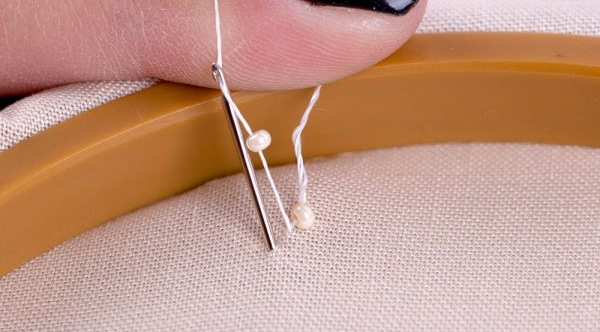

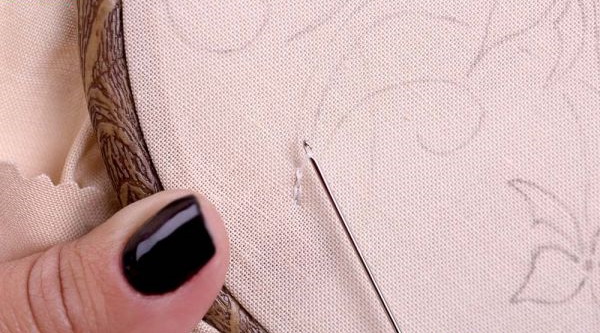
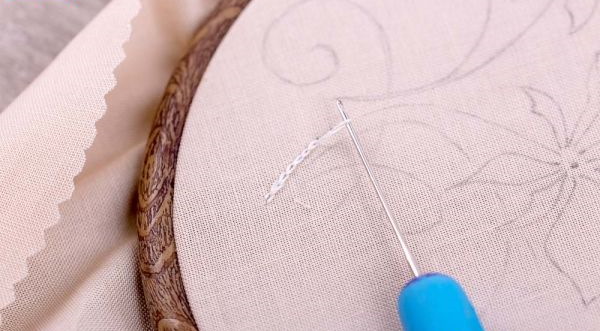
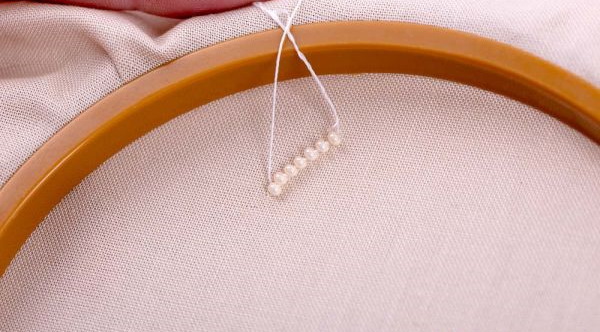


By following simple tips, you can learn to create a wide variety of products, decorating paintings, textile decor, jewelry, accessories, and wardrobe items with unique patterns.
Options
Embroidery with Luneville crochet is a delicate work, so beginners are offered simple master classes and ready-made ideas for creating jewelry and accessories. You can draw the patterns for work yourself or take ready-made ones, print them out and transfer the drawing to the fabric.
Brooch
To create an original beaded brooch, you need to prepare:
- stencil with a pattern;
- strong thin threads to match the decor;
- dense base fabric (felt, velvet);
- a piece of eco-leather;
- fittings (metal clasp);
- glue and glue gun;
- decorative materials - beads and gold-colored sequins.
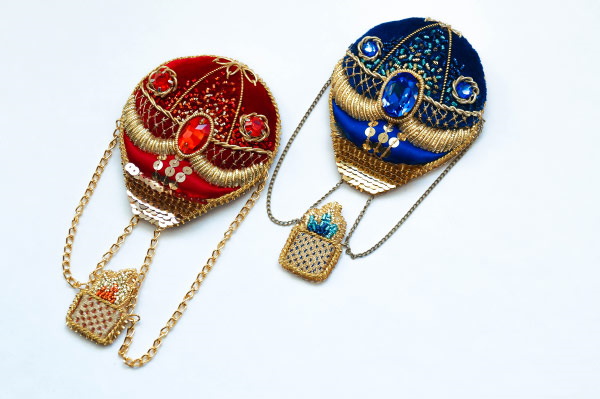
To make a brooch, novice craftswomen should follow detailed instructions:
- Using a stencil, the design is transferred onto the base fabric using a pencil, a bar of soap, or dusting.
- The base of the brooch is cut out along the contour.
- Using the Luneville bead embroidery technique, the base is embroidered with threads with beads strung on it.
- A brooch base of a similar shape is cut out from a piece of eco-leather.
- Use a glue gun to attach to the fabric base.
At the final stage, all that remains is to sew on the clasp, and the fashionable hand-made accessory is ready.
Bag
To create a beautiful, elegant handbag, you need to prepare:
- set of safety pins;
- strong thin silk or viscose threads;
- sewing machine;
- base fabric;
- beads of several shades of the same palette;
- hoop or tapestry frame;
- finishing cord.
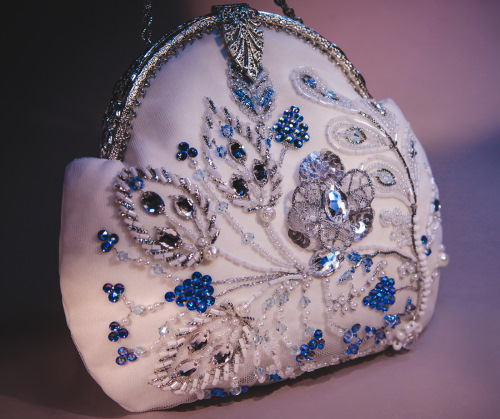
Algorithm for creating a handbag with beaded trim:
- From the fabric you need to cut a piece measuring 40*15 and stretch it on the hoop. Using a stencil, transfer the drawing onto the fabric with a pencil or marker.
- The embroidery is done from a spool; at the beginning of the work, beads are strung onto the thread.
- Pierce the fabric with a needle at the beginning, then hold the end of the thread with the fingers of your left hand and pull the loop to the front side of the fabric.
- Moving along the contour, make a second puncture, turn the base over and move the bead, tying it with a thread.
- From the front side, pull 1 loop through the other, leaving only 1 loop on the hook.
The algorithm is repeated until all the contours of the pattern are embroidered. Upon completion, the thread is fixed by yarning over several loops, tightened into a strong knot. If several types of decor or shades of beads are used in the work, the work is performed from the spool with one type of decor.
After a separate part of the pattern is ready, the thread is cut, fixed, after which you can start stringing another bead again. When the embroidery is ready, the fabric is removed from the frame, folded in half. If the base is creased, it must be smoothed out with an iron.
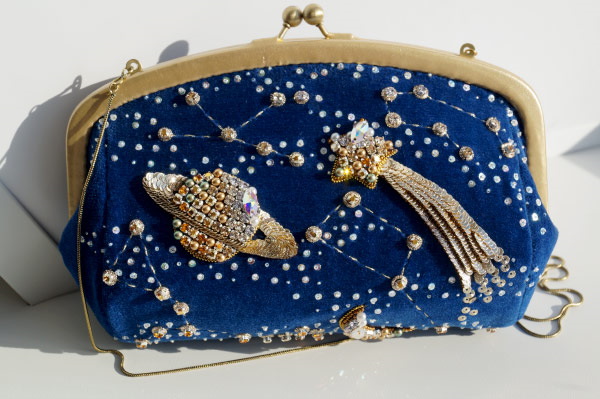
Then, using a sewing machine, sew the edges on the sides, sew the drawstring along the contour of the product and insert a decorative cord into it. A stylish pouch bag with an original beaded pattern will become a stylish addition to a fashionable image.
One of the oldest needlework techniques is Luneville embroidery, which has not lost its popularity today. For beginners, mastering the basics of creativity is easy if you follow detailed instructions and advice from experienced needlewomen. Visual master classes and ready-made stencils with drawings, with original patterns will help in creating exclusive works on any type of fabric.
Video about Luneville embroidery
Luneville embroidery - photos and patterns by Victoria Boyko:
